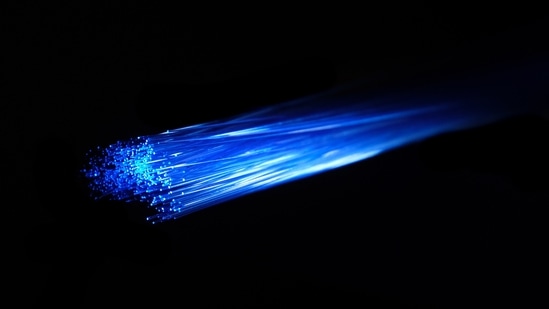This photonic chip can transmit all of Internet's traffic in one second: Study
Scientists have specially developed an optical chip that can use the light from a single infrared laser to make a rainbow spectrum of colours, or frequencies.
Researchers from Technical University of Denmark (DTU) and Chalmers University of Technology have claimed to have set a world record by transmitting 1.8 petabits per second (1 million gigabits per second) employing only a single laser and a single optical chip. It is to be noted that 1.8 petabits corresponds to twice the global internet traffic.

The research published in Nature journal has successfully demonstrated transmission of 1.84 Pbit/s over a 37-core, 7.9-km-long fibre using 223 wavelength channels built from a single microcomb ring resonator generating a stabilized dark-pulse Kerr frequency comb.
Scientists have specially developed an optical chip that can use the light from a single infrared laser to make a rainbow spectrum of colours, or frequencies. Each colour can be separated and imprint data and can then be reassembled and sent over an optical fibre, thus transferring data. The chip has higher Q factor (Quality factor) minimising the optical losses.
ALSO READ: India will take lead in 6G, says telecom minister day after 5G launch
Researchers say that to attain the same speed with existing equipment, it would require over 1000 lasers. “Our solution provides a potential for replacing hundreds of thousands of the lasers located at Internet hubs and data centres, all of which guzzle power and generate heat. We have an opportunity to contribute to achieving an Internet that leaves a smaller climate footprint," told Leif Katsuo Oxenløwe, Professor of Photonic Communication Technologies at DTU.
He asserts that with future development a single chip will be able to transmit up to 100 Pbit/s. "… Our solution is scalable—both in terms of creating many frequencies and in terms of splitting the frequency comb into many spatial copies and then optically amplifying them, and using them as parallel sources with which we can transmit data. Although the comb copies must be amplified, we do not lose the qualities of the comb, which we utilize for spectrally efficient data transmission,” he adds.






